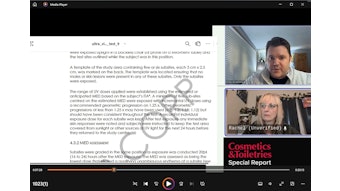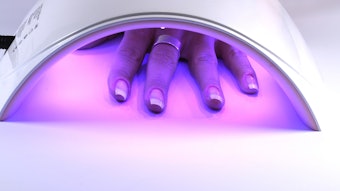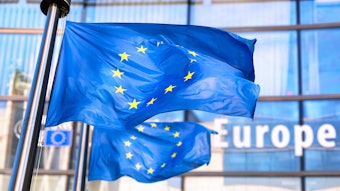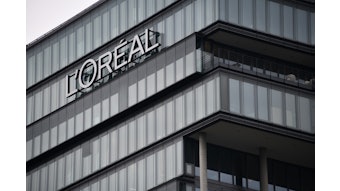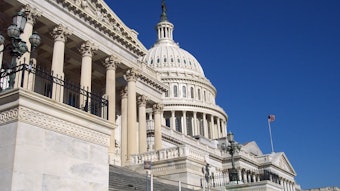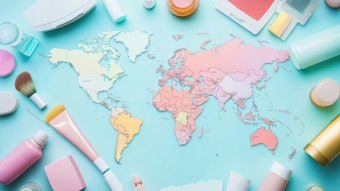Becoming a player in the Chinese cosmetic market seems to be on every company’s “must do” list, especially since, depending on the source, it is estimated that this market could be worth as much as US $13 billion or more. Color cosmetics, according to the Hong Kong Trade Development Council (HKTDC), have experienced continued yearly growth with no foreseeable slowdown. HKTDC reported that China saw $3 billion in growth in color cosmetics in 2013, with 20.9% growth in colored lip products, 9.4% growth in eye makeup and 25.9% growth in powders.1 This expansion has been attributed to the introduction of a daily makeup routine to Chinese women, most of whom did not wear makeup until recently. As a result, labeling is extremely important to educate Chinese women on how to use color cosmetics. Claims are also key for brands to promote the benefits of their products and compete for a share of the Chinese color cosmetic market.
In relation, some companies, particularly small and medium-sized brands, have entered the market using over-labeling on packaging to meet the Chinese regulatory requirements without incurring much additional cost. Over-labeling is labeling placed over an existing package label to provide additional data. Some companies use over-labels to add the translation of regulatory language mandated by specific markets onto the package. In some cases, it is the distributor who over-labels the package for the market and not the company. These over-labels are also used to fix mistakes and/or cover something that should not be on a package.
On Nov. 15, 2014, the Chinese Food and Drug Administration (CFDA) proposed a new regulation related to over-labels. Titled the “Administrative Management of Cosmetic Labeling” (AMCL) draft regulation, it was issued in Chinese and with only a 15 day comment period. While this action was issued under the guise of consumer protection, the CFDA often creates new regulations to preserve the state of the domestic cosmetic industry, which accounts for less than 20% of cosmetic sales in China according to HKTDC.1
As part of this regulation, the CFDA has proposed the prohibition of over-labeling. Under current regulations, only mandated information such as the name of the product, name and address of distributor/manufacturer, ingredients, etc., requires Chinese translation, which could be added to a package using an over-label. However, according to CFDA rationale, allowing for English claims to be visible if the label were removed could lead to a perceived competitive advantage over domestic brands.
Prohibiting over-labeling would require cosmetic companies to print entire product labels in Chinese. Additionally, companies would need to prepare and manage a separate product inventory just for China. Color cosmetics would be greatly impacted, particularly those not sold in secondary packages such as foundations, eyeliners, nail polishes, etc. On these products, ingredients and all other required elements must be displayed in Chinese. Any screen-printed product, i.e., whose label is printed directly on the package, could previously be over-labeled, it would now require printing in Chinese. This could lead to consumer confusion over the origin of the product because it would not look like the typical foreign product the consumer was accustomed to purchasing.
These costs of Chinese-only packaging and associated inventory management will cause some companies to think twice about entering the Chinese market—coupled with the 10% tariff imposed on imported lip, eye and color products and powders, and the high cost of registration. And if it seemed as though it could not get more costly or cumbersome, the AMCL includes a provision that efficacy or performance claims must be validated and pre-approved by an independent third party in China before they can be included on the label. Theoretically, this step should be conducted prior to the submission of products to the national lab for testing, which requires samples be in their final packaging—adding more time to the already lengthy process.
Furthermore, as part of the claims portion of the AMCL, the CFDA has issued a list of words forbidden to describe product benefits. While it is not clear how the list might be interpreted, or how the regulation would be enforced on a provincial level, proposed forbidden words include: prevention, detoxification, antioxidant and redness; and absolute terms such as powerful, efficient and quick. It is also unclear whether this list would apply to special-function cosmetics like skin-whitening and SPF products, or regular cosmetics.
Trade associations such as the U.S. Personal Care Products Council and Cosmetics Europe are working with the U.S. Government and World Trade Organization to address concerns over the proposed CFDA. At this time, it is uncertain how it will end; however, companies should be prepared for the CFDA to move forward with its implementation.


